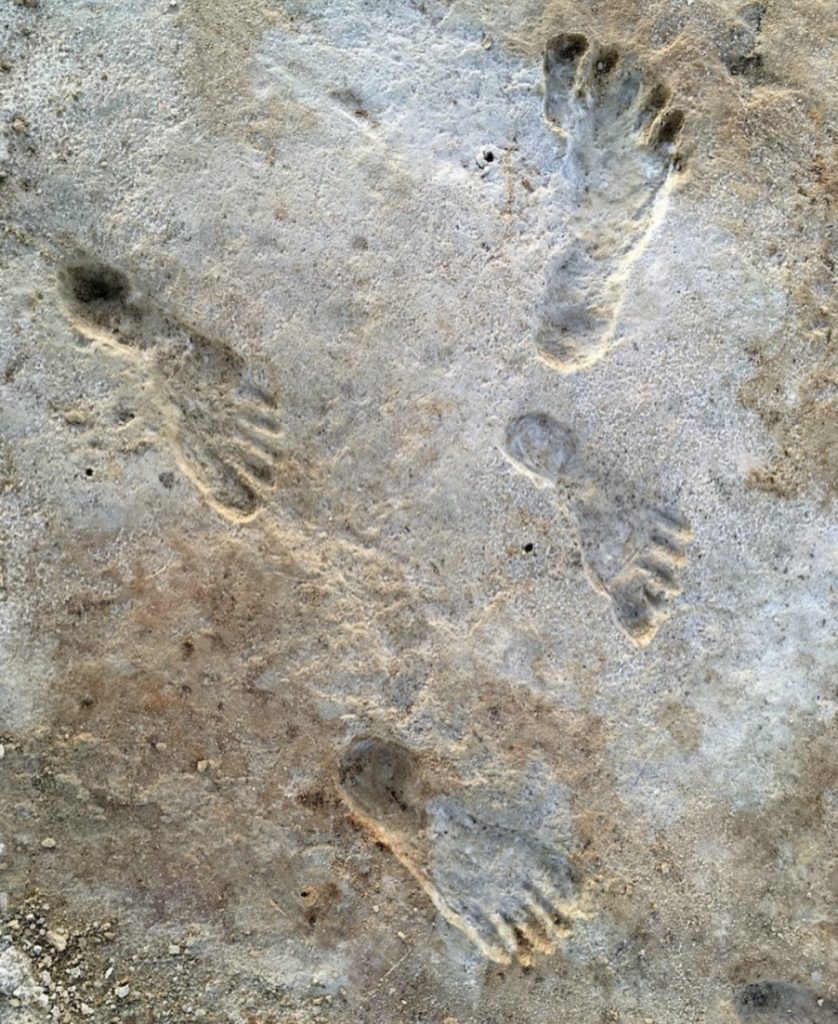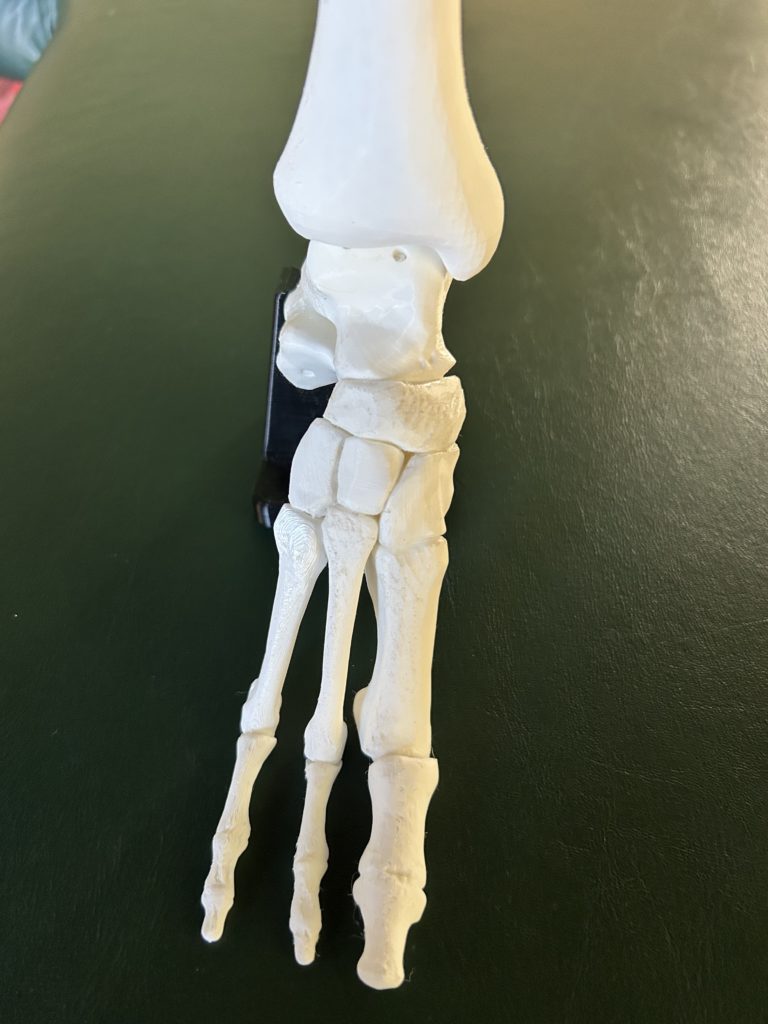While deeply embedded within our built surroundings, it is challenging for us to understand the movement dynamics of our hunter/gatherer ancestors. A recent discovery in White Sands National Park of ancient footprints, perhaps 23,000 years old, sheds a little light on the gait dynamics of early Mesoamericans. Looking at the picture below one is immediately struck by the dominance of the big toe in gait. This correlates anatomically with the sturdiness of the big toe skeletal structure (shown in the picture underneath). The footprints leave an impression of a dynamic interaction in movement. Within our shoe-centric surroundings our feet do not reach into the ground as shown here, but rather get scrunched up into a “package” that we wear for opposing usually flat, hard floors of our habitats.
A hypothesis for how this impression can be made is that the ball of the foot strikes the ground first, and then the heel drops as the weight of the body transfers onto that foot. If your feet are in good shape and you try this on sand you may get a similar result. The energy of the stride is stored in the calf muscles like a spring and translated into forward motion as the body is pushed forward with the first three toes.

A FUNCTIONAL MODEL OF THE STRUCTURAL ATTRIBUTES OF GAIT WITHIN THE FOOT
Only the first three toes are shown as they play the dominant role in gait as pictured above.

There is a post discussing this, and other functional/structural relationships in the feet in some detail here:
THE FOOT: FUNCTION FROM STRUCTURE
A MEDICAL DESCRIPTION OF NORMAL GAIT
We have transitioned so far from a vibrant and dynamic gait that the article in this Kaiser Permanente newsletter on foot function is considered the gold standard for healthy stance and movement patterns (normal gait is established as heel-strike with a 15-degree inward roll (1st. 2 pages)):
